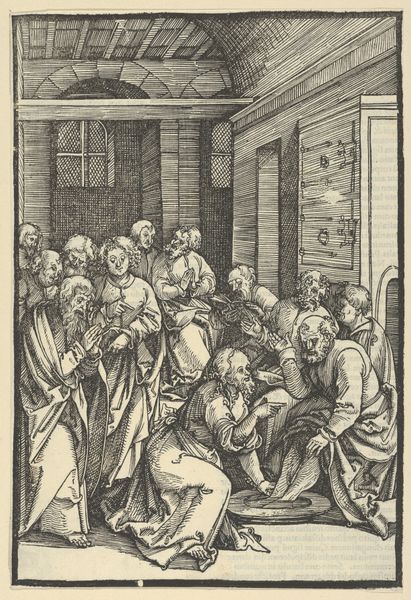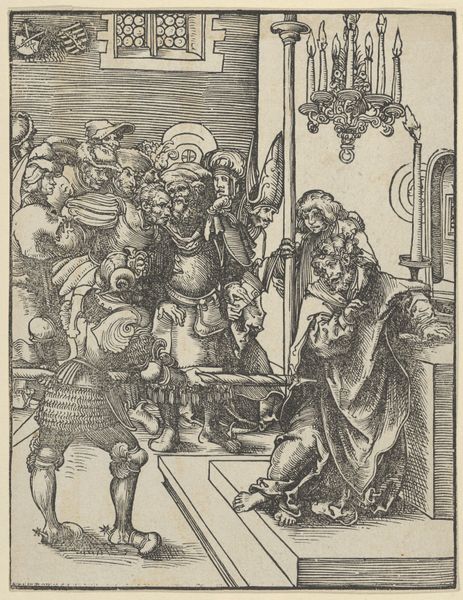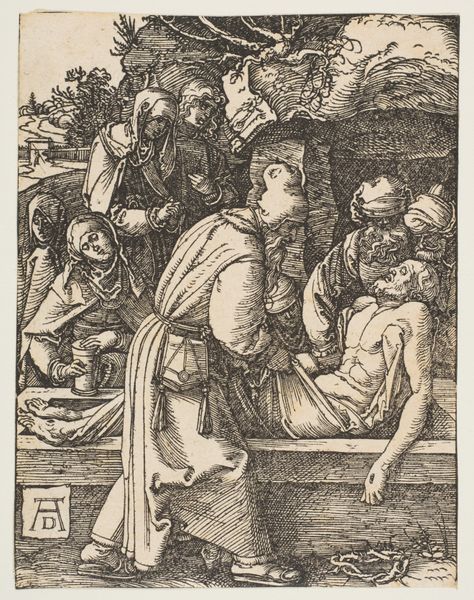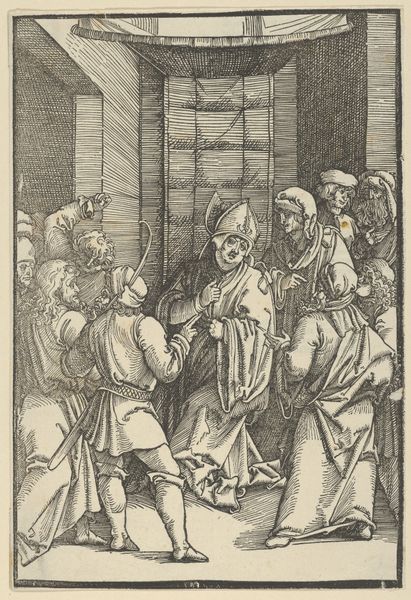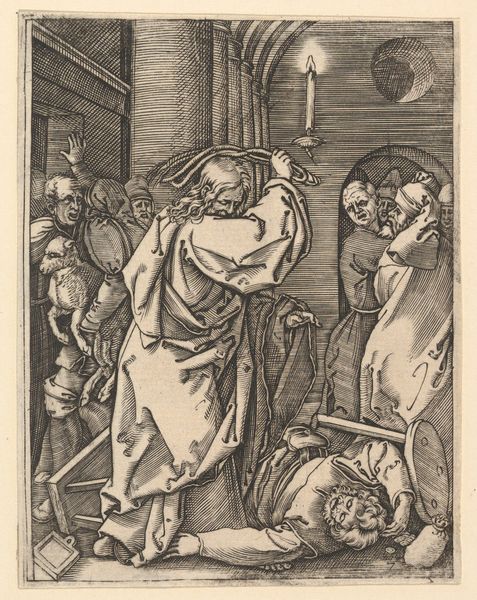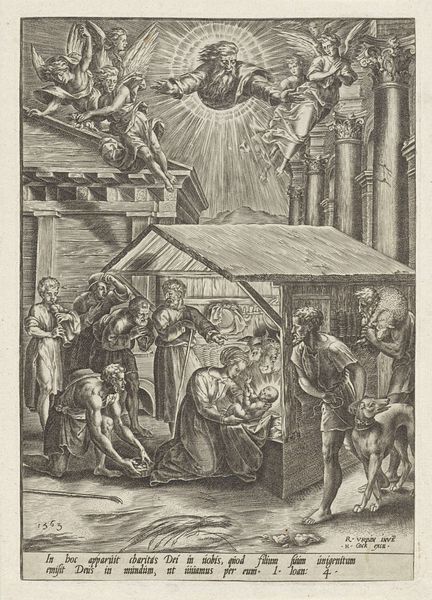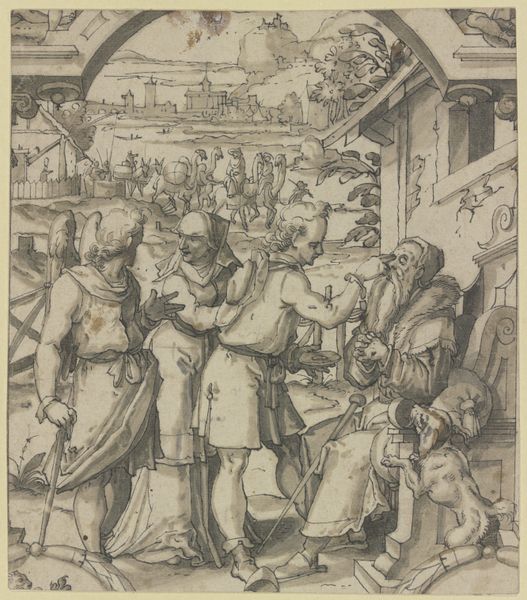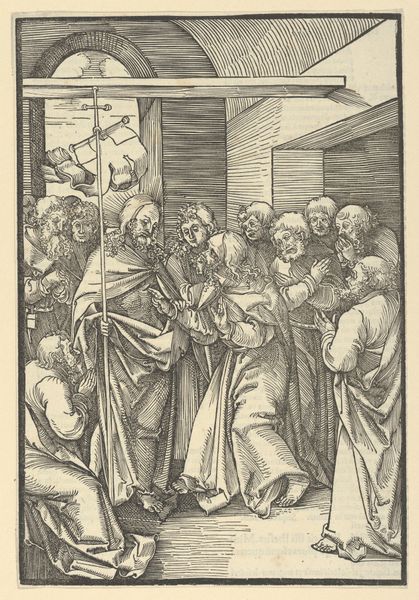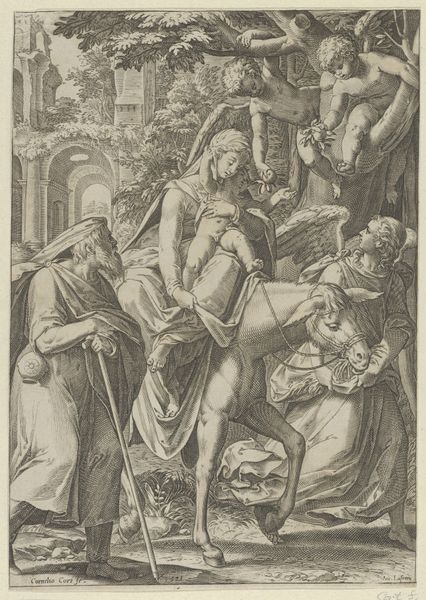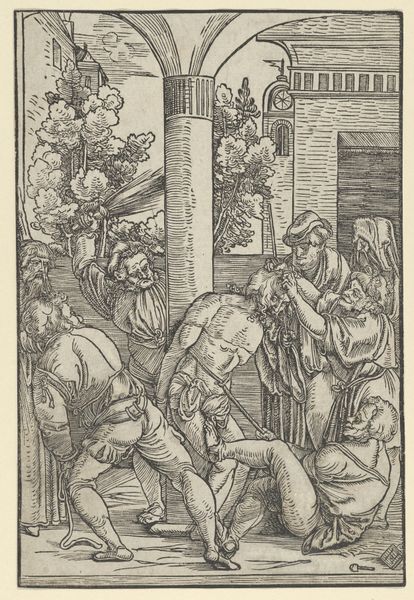
James The Less from the Martyrdom of the Twelve Apostles 1472 - 1553
0:00
0:00
drawing, print, woodcut
#
drawing
#
narrative-art
# print
#
figuration
#
woodcut
#
history-painting
#
northern-renaissance
Dimensions: Sheet: 6 5/16 × 4 15/16 in. (16 × 12.6 cm)
Copyright: Public Domain
Curator: Here we have Lucas Cranach the Elder’s woodcut, dating from the 16th century, titled “James The Less from the Martyrdom of the Twelve Apostles." It's quite a powerful scene. Editor: Absolutely. It feels brutally direct, doesn't it? All that compressed energy and angularity, you can almost hear the screams echoing from it. I suppose it is depicting an execution after all... Curator: Yes, Cranach captures the martyrdom with remarkable, well, directness, as you put it. The figures are all tightly packed together, heightening the sense of chaos. The architectural details and costumes point us to the Northern Renaissance, a period grappling with religious upheaval and reform. Look closely and you’ll notice each line seems deliberate, contributing to the drama. Editor: It’s interesting how the artist employs certain iconographic tropes in such a graphic and unsettling depiction. Note the prominence given to weapons and how each figure around the main action conveys very distinct facial and gestural reactions. They are less portraits and more distilled reactions to this event. It all seems designed to pull the viewer into the psychological weight of witnessing violence. Curator: The woodcut medium lends itself well to this stark presentation. There is very little subtlety, really. The bold black lines and white spaces emphasize the brutality of the act. We are witnesses to the execution as well. Cranach understood that the purpose of such art in those times was, essentially, propaganda. He was painting a visceral drama about unwavering faith in the face of terrible, terrible odds. Editor: And how faith gets instrumentalized. The symbols aren't just religious; they’re statements of power and control, aren't they? You look at this and see the making of not only a martyr but a very loud statement of what the martyr represents in this historic moment. Curator: Indeed, you nailed it. Cranach invites us to delve into that precise point. Editor: Seeing this puts so much of the political context in perspective— the intense ideological clashes playing out across the landscape of the time, captured with disturbing clarity here. It’s definitely food for thought, centuries later.
Comments
No comments
Be the first to comment and join the conversation on the ultimate creative platform.
